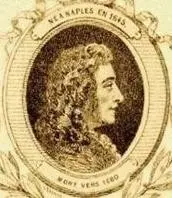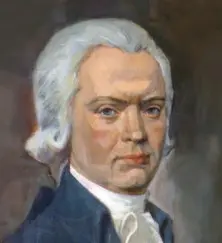
Karl (Karoy) Goldmark (Karl Goldmark) |
Karl Goldmark
The life and work of Karoly Goldmark is a constant struggle for bread, a struggle for knowledge, for a place in life, love for beauty, nobility, art.
Nature endowed the composer with special abilities: in the most difficult conditions, thanks to the iron will, Goldmark was engaged in self-education, constantly studying. Even in the extremely rich, multicolored musical life of the XNUMXth century, he was able to retain his individuality, a special color sparkling with fabulous oriental colors, a stormy intonation, a peculiar richness of melodies that permeate all his work.
Goldmark is self-taught. The teachers taught him only the art of playing the violin. The complex mastery of counterpoint, the developed technique of instrumentation, and the very principles of modern instrumentation, he learns himself.
He came from such a poor family that at the age of 12 he still could not read or write, and when he came to enter his first teacher, a violinist, they gave him alms, thinking that he was a beggar. As an adult, matured as an artist, Goldmark turned into one of the most revered musicians in Europe.
At the age of 14, the boy moved to Vienna, to his older brother Joseph Goldmark, who was then a medical student. In Vienna, he continued to play the violin, but his brother did not believe that a good violinist would come out of Goldmark, and insisted that the boy enter a technical school. The boy is obedient, but at the same time stubborn. Entering the school, he simultaneously takes exams at the conservatory.
After some time, however, Goldmark was forced to interrupt his studies. A revolution broke out in Vienna. Josef Goldmark, who was one of the leaders of the young revolutionaries, must flee – the imperial gendarmes are looking for him. A young conservatory student, Karoly Goldmark, goes to Sopron and takes part in the battles on the side of the Hungarian rebels. In October 1849, the young musician became a violinist in the orchestra of the Sopron Theater Company of Cottown.
In the summer of 1850, Goldmark received an invitation to come to Buda. Here he plays in an orchestra performing at the venues and in the theater of the Buda Castle. His colleagues are a random company, but nevertheless he benefits from them. They introduce him to the opera music of that era – to the music of Donizetti, Rossini, Verdi, Meyerbeer, Aubert. Goldmark even rents a piano and finally fulfills his old dream: he learns to play the piano, and with such amazing success that he soon begins to give lessons himself and acts as a pianist at balls.
In February 1852 we find Goldmark in Vienna, where he plays in a theater orchestra. His faithful “companion” – need – does not leave him here either.
He was about 30 years old when he also performed as a composer.
In the 60s, the leading music newspaper, the Neue Zeitschrift für Musik, was already writing about Goldmark as an outstanding composer. In the wake of success came brighter, more carefree days. His circle of friends includes the remarkable Russian pianist Anton Rubinstein, the composer Cornelius, the author of The Barber of Baghdad, but above all, Franz Liszt, who, with unerring confidence, sensed a great talent in Goldmark. During this period, he wrote works that had worldwide success: “Hymn of Spring” (for solo viola, choir and orchestra), “Country Wedding” (symphony for large orchestra) and the overture “Sakuntala” composed in May 1865.
While “Sakuntala” is reaping huge success, the composer began to work on the score of “The Queen of Sheba”.
After many years of intense, hard work, the opera was ready. However, theater criticism did not really take into account the growing popularity of the creator of “Sakuntala”. Under the most unfounded pretexts, the opera was repeatedly rejected. And Goldmark, disappointed, retreated. He hid the score of The Queen of Sheba in a drawer on his desk.
Later, Liszt came to his aid, and in one of his concerts he performed a march from The Queen of Sheba.
“The march,” writes the author himself, “was a huge, stormy success. Franz Liszt publicly, for everyone to hear, congratulated me … “
Even now, however, the clique has not ceased its struggle against Goldmark. The formidable lord of music in Vienna, Hanslick, deals with the opera with one stroke of the pen: “The work is unsuitable for the stage. The only passage that still sounds somehow is the march. And it has just been completed…”
It took decisive intervention by Franz Liszt to break the resistance of the leaders of the Vienna Opera. Finally, after a long struggle, The Queen of Sheba was staged on March 10, 1875 on the stage of the Vienna Opera.
A year later, the opera was also staged at the Hungarian National Theatre, where it was conducted by Sandor Erkel.
After success in Vienna and Pest, The Queen of Sheba entered the repertoire of opera houses in Europe. Goldmark’s name is now mentioned along with the names of great opera composers.
Balashsha, Gal





